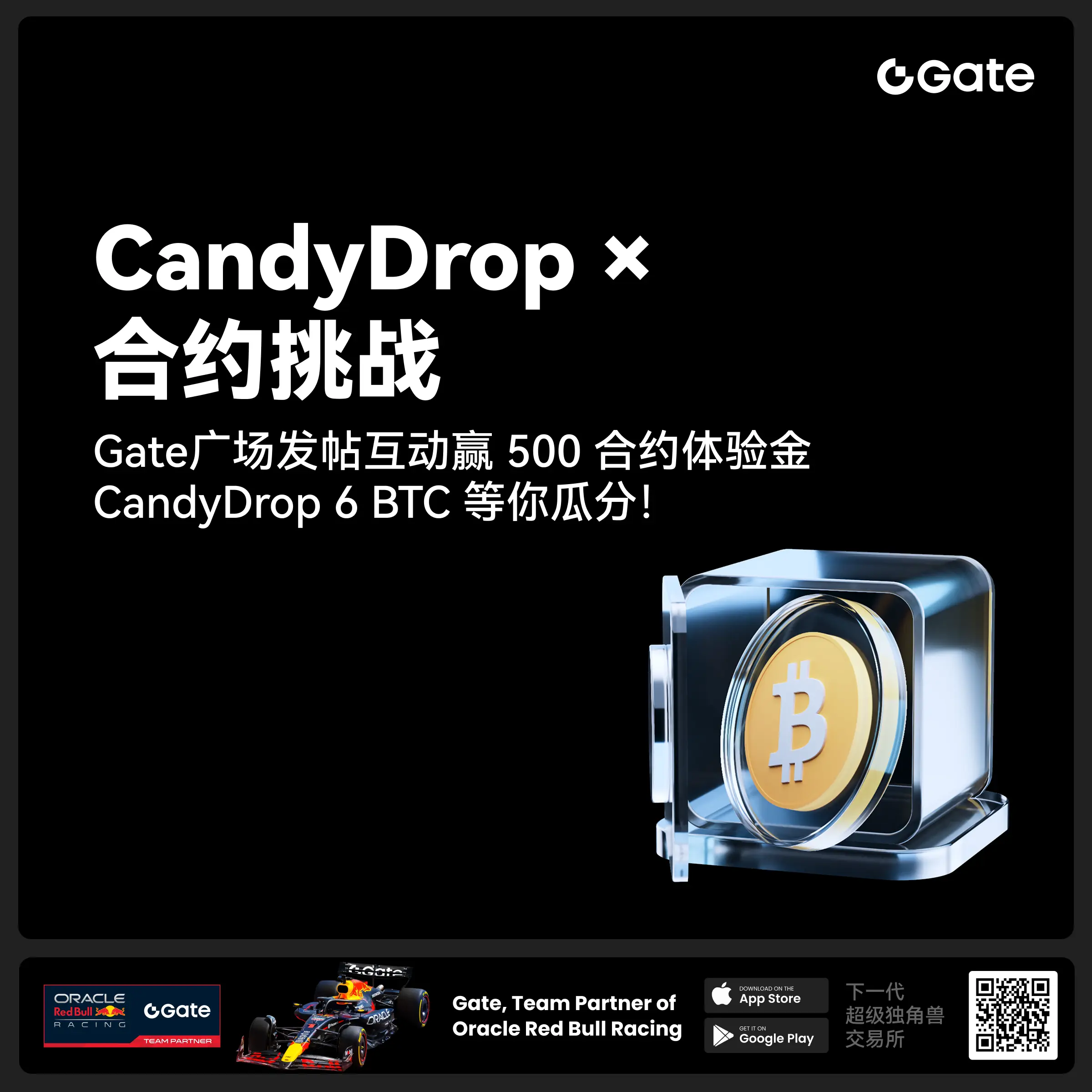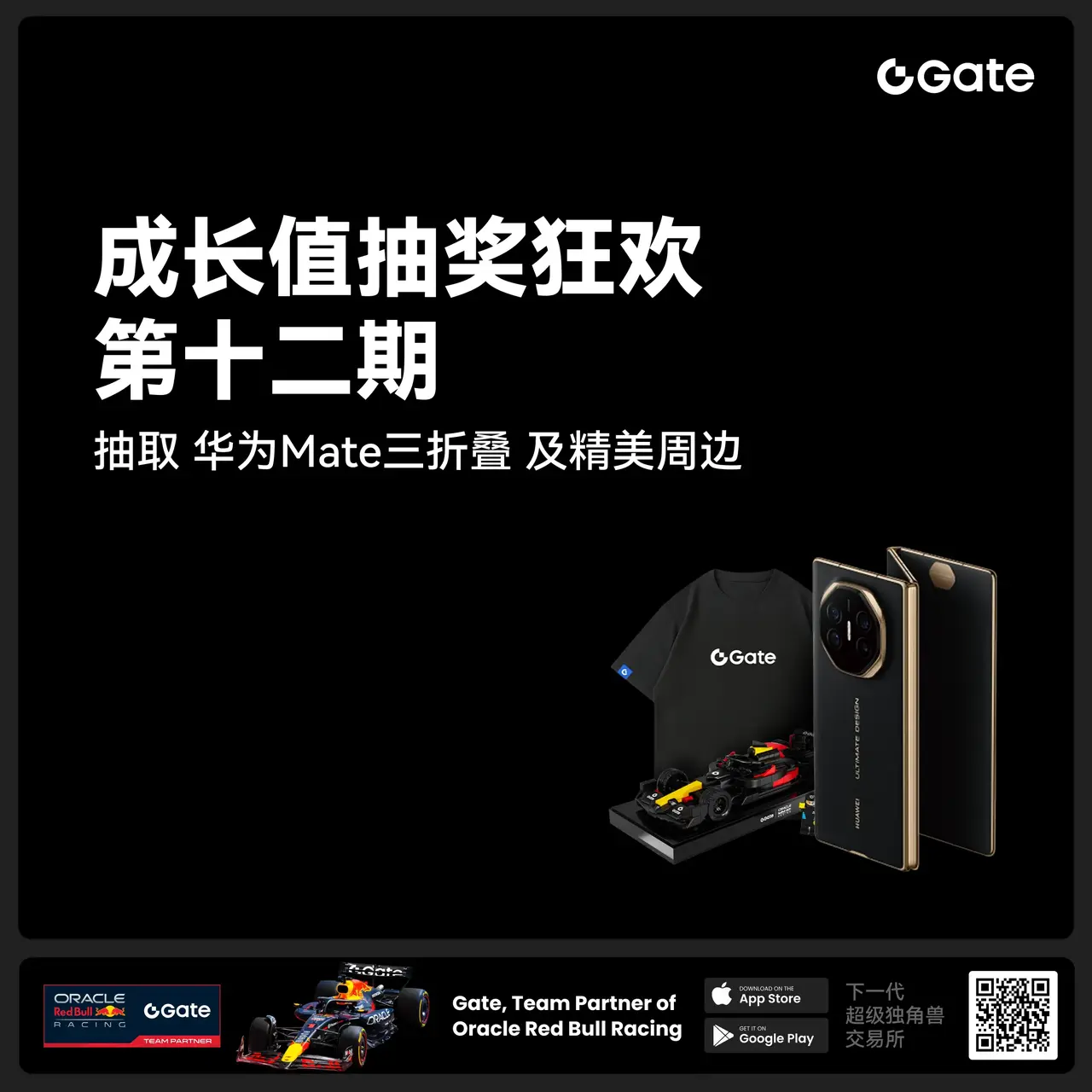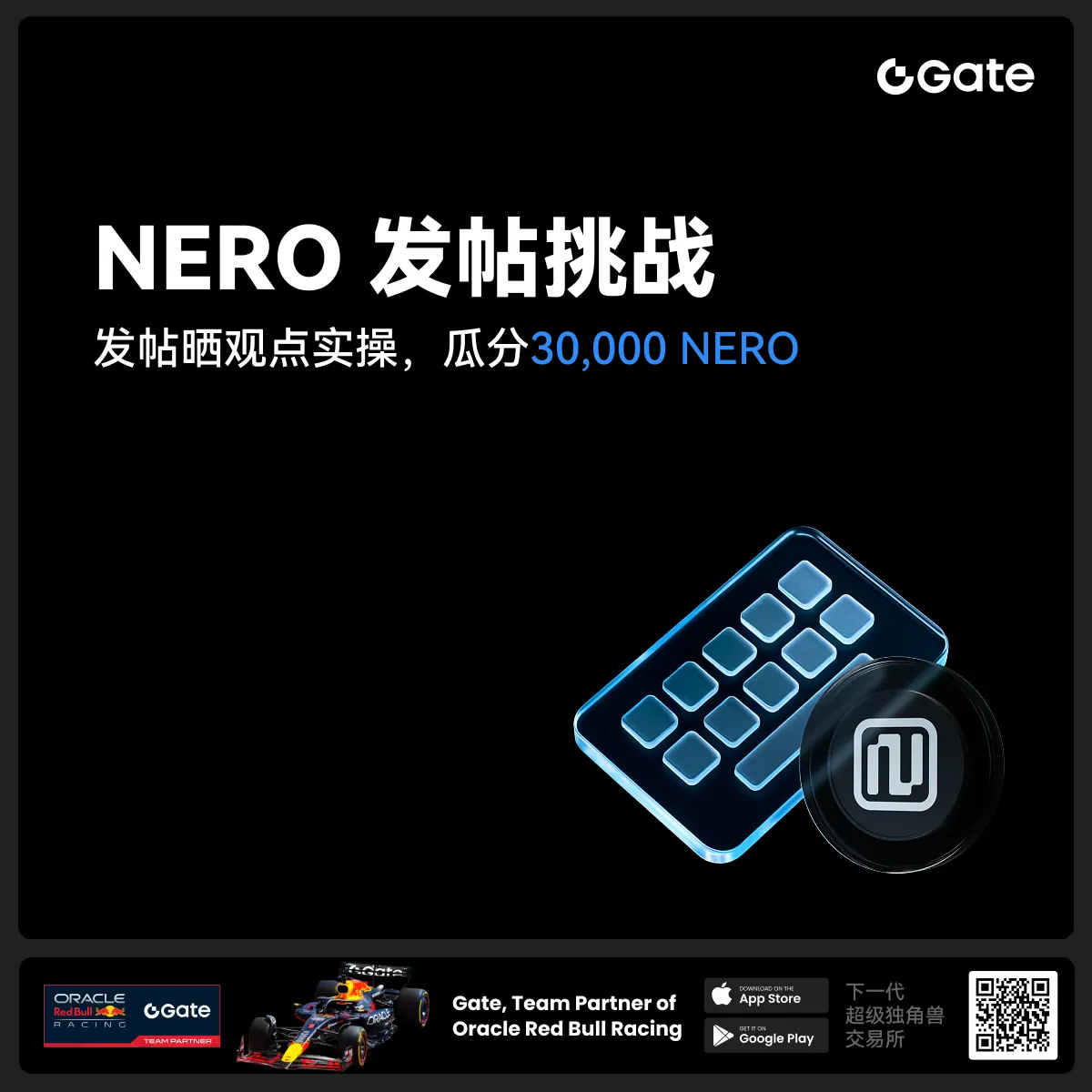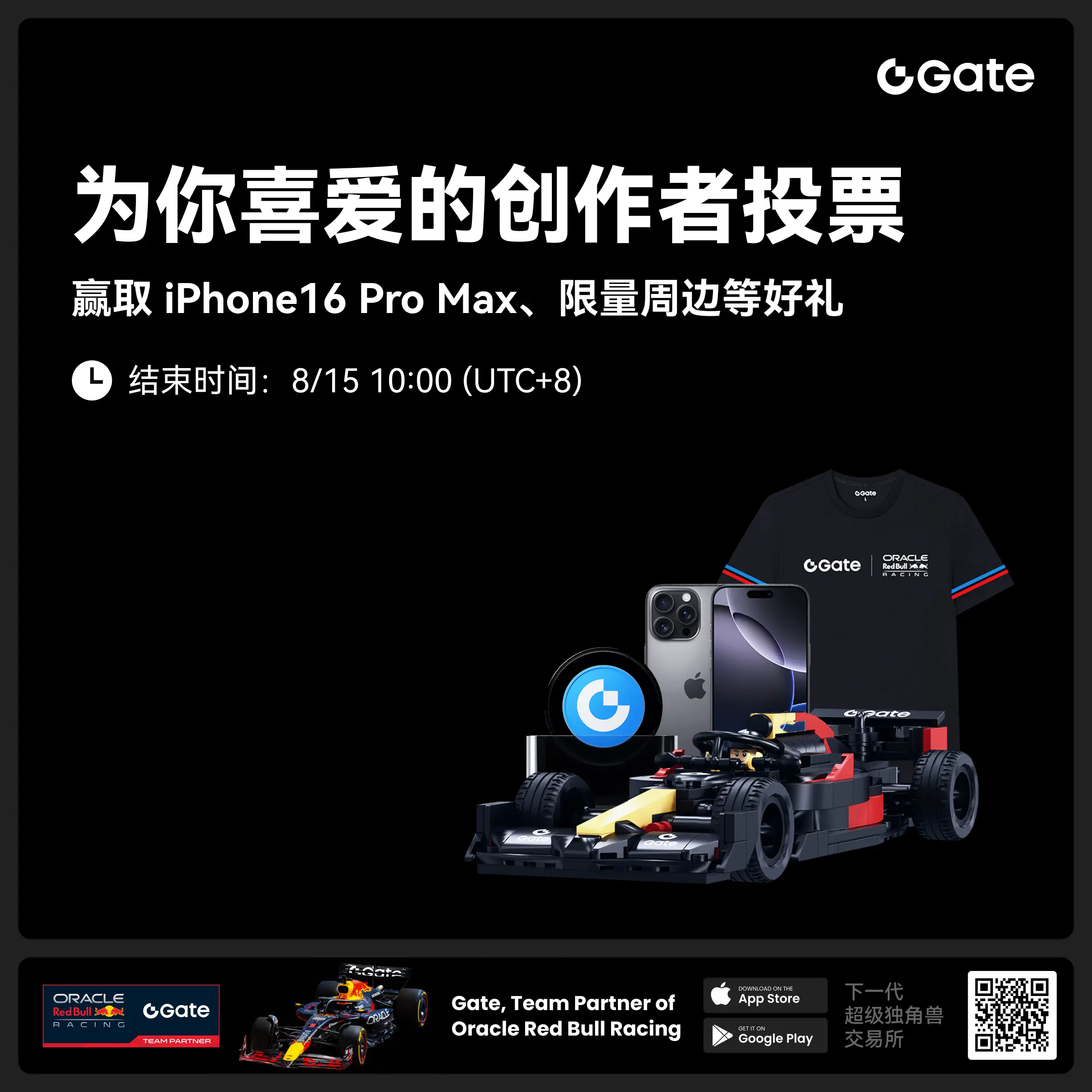- 話題1/3
52k 熱度
37k 熱度
51k 熱度
9k 熱度
22k 熱度
- 置頂
- 🎉 #CandyDrop合约挑战# 正式開啓!參與即可瓜分 6 BTC 豪華獎池!
📢 在 Gate 廣場帶話題發布你的合約體驗
🎁 優質貼文用戶瓜分$500 合約體驗金券,20位名額等你上榜!
📅 活動時間:2025 年 8 月 1 日 15:00 - 8 月 15 日 19:00 (UTC+8)
👉 活動連結:https://www.gate.com/candy-drop/detail/BTC-98
敢合約,敢盈利
- 🎉 攢成長值,抽華爲Mate三折疊!廣場第 1️⃣ 2️⃣ 期夏季成長值抽獎大狂歡開啓!
總獎池超 $10,000+,華爲Mate三折疊手機、F1紅牛賽車模型、Gate限量週邊、熱門代幣等你來抽!
立即抽獎 👉 https://www.gate.com/activities/pointprize?now_period=12
如何快速賺成長值?
1️⃣ 進入【廣場】,點擊頭像旁標識進入【社區中心】
2️⃣ 完成發帖、評論、點讚、發言等日常任務,成長值拿不停
100%有獎,抽到賺到,大獎等你抱走,趕緊試試手氣!
截止於 8月9日 24:00 (UTC+8)
詳情: https://www.gate.com/announcements/article/46384
#成长值抽奖12期开启#
- 📢 Gate廣場 #NERO发帖挑战# 秀觀點贏大獎活動火熱開啓!
Gate NERO生態周來襲!發帖秀出NERO項目洞察和活動實用攻略,瓜分30,000NERO!
💰️ 15位優質發帖用戶 * 2,000枚NERO每人
如何參與:
1️⃣ 調研NERO項目
對NERO的基本面、社區治理、發展目標、代幣經濟模型等方面進行研究,分享你對項目的深度研究。
2️⃣ 參與並分享真實體驗
參與NERO生態周相關活動,並曬出你的參與截圖、收益圖或實用教程。可以是收益展示、簡明易懂的新手攻略、小竅門,也可以是行情點位分析,內容詳實優先。
3️⃣ 鼓勵帶新互動
如果你的帖子吸引到他人參與活動,或者有好友評論“已參與/已交易”,將大幅提升你的獲獎概率!
NERO熱門活動(帖文需附以下活動連結):
NERO Chain (NERO) 生態周:Gate 已上線 NERO 現貨交易,爲回饋平台用戶,HODLer Airdrop、Launchpool、CandyDrop、餘幣寶已上線 NERO,邀您體驗。參與攻略見公告:https://www.gate.com/announcements/article/46284
高質量帖子Tips:
教程越詳細、圖片越直觀、互動量越高,獲獎幾率越大!
市場見解獨到、真實參與經歷、有帶新互動者,評選將優先考慮。
帖子需原創,字數不少於250字,且需獲得至少3條有效互動
- 🎉 親愛的廣場小夥伴們,福利不停,精彩不斷!目前廣場上這些熱門發帖贏獎活動火熱進行中,發帖越多,獎勵越多,快來GET你的專屬好禮吧!🚀
1️⃣ #GateLaunchpad上线IKA# |IKA認購體驗
在Gate廣場帶話題曬出你的IKA Launchpad認購體驗,4位幸運分享者講瓜分$200分享獎池!
詳情 👉️ https://www.gate.com/post/status/12566958
2️⃣ #ETH冲击4800# |行情分析預測
大膽發帖預測ETH走勢,展示你的市場洞察力!10位幸運用戶將平分0.1 ETH 獎勵!
詳情 👉️ https://www.gate.com/post/status/12322403
3️⃣ #创作者活动第二期# |ZKWASM話題
在廣場或推特發布與 ZKWASM 或其交易活動相關的原創內容,瓜分4,000枚ZKWASM!
詳情 👉️ https://www.gate.com/post/status/12525794
4️⃣ #Gate广场征文活动第二期# |ERA話題
談談你對ERA的觀點/體驗,參與並推廣活動,700 ERA大獎等你贏!
詳情 👉️ https://www.gate.com/post/status/12361653
5️⃣ #MBG任务挑战# |MBG話題
分享你對MBG的洞察,積極參與和推廣MBG活動,20位小 - 🎉Gate 2025 上半年社區盛典:內容達人評選投票火熱進行中 🎉
🏆 誰將成爲前十位 #Gate广场# 內容達人?
投票現已開啓,選出你的心頭好
🎁贏取 iPhone 16 Pro Max、限量週邊等好禮!
📅投票截止:8 月 15 日 10:00(UTC+8)
立即投票: https://www.gate.com/activities/community-vote
活動詳情: https://www.gate.com/announcements/article/45974
現實世界資產代幣化:技術解析與2030年2萬億美元市場展望
現實世界資產代幣化技術解析
代幣化的現實世界資產(RWAs)是指在區塊鏈上記錄的數字代幣,代表對實體或無形資產的所有權或法律權利。代幣化範圍廣泛,包括房地產、商品、藝術品、知識產權和金融工具等。
通過實現部分所有權,代幣化提高了資產流動性,使更多人能參與投資。區塊鏈的不可篡改帳本確保了透明的所有權記錄,降低了欺詐風險。在去中心化交易所交易的代幣化資產帶來了前所未有的市場可及性和效率。
麥肯錫預計,到2030年各類代幣化資產(不含加密貨幣和穩定幣)的市場總值將達到約2萬億美元,悲觀情況下爲1萬億美元,樂觀情況下可達4萬億美元。
當前體系
現實世界資產的代幣化是通過區塊鏈或分布式帳本以數字代幣形式表示鏈下資產所有權。這一過程將資產的特性、所有權和價值與其數字形式連接起來。代幣作爲數字持有工具,使持有人能主張對基礎資產的所有權。
歷史上,物理持有證書被用來證明資產所有權,但易受盜竊、遺失等威脅。20世紀80年代,數字持有工具出現,但受限於當時技術未能實現。金融行業轉向集中化電子登記系統記錄數字資產,雖提高效率但引入新的成本和低效問題。
基於分布式帳本技術的系統
分布式帳本技術(DLT)的發展使重新審視數字持有證券或代幣成爲可能。DLT由協議和框架組成,使計算機能在網路中提議和驗證交易,同時保持記錄同步。去中心化降低了行政負擔,減少了依賴中心實體帶來的系統故障風險。
DLT系統通過單一共識機制簡化了交易執行、清算和結算流程,相比傳統系統中多個中介機構的處理更加高效。
去中心化解決方案
區塊鏈是一種分布式帳本技術,通過去中心化的計算機網路運行。代幣可以在私有許可鏈和公共無許可鏈上發行。私有許可鏈由中心實體控制,限制特定用戶訪問。公共無許可鏈無需中央權威控制,向所有用戶開放。
區塊鏈選擇決定了發行方能保持的控制程度。公共無許可鏈賦予發行方較少控制權。選擇應與發行方目標及代幣預期功能一致。
資產代幣化的一個關鍵優勢是通過智能合約實現自動化。智能合約是區塊鏈上的程序,當滿足特定條件時自動執行。這種自動化提高了效率,降低了成本。
代幣化方法
現實世界資產代幣化可通過資產的表現形式和所有權兩個關鍵屬性進行分析。表現形式包括資產的經濟特性,所有權驗證需要鏈下或鏈上帳本。
代幣化方法有四種,區別在於代幣與基礎資產的直接關聯程度:
直接所有權:數字代幣本身作爲官方所有權記錄,適用於數字原生資產。
1:1資產支持代幣:托管方持有資產並發行代表該資產直接權益的代幣。
超額抵押代幣:用不同於預期表示資產的資產作爲抵押發行代幣。
不足抵押代幣:發行追蹤某資產價值但未完全抵押的代幣,風險較高。
代幣化的優勢
現實世界資產代幣化主要通過分布式帳本技術實現效率提升:
原子結算:智能合約同時執行交易的兩個環節,消除對手方風險。
流動性提升:增強資產可轉讓性,使不可交易資產變得可交易。
減少中介:智能合約替代傳統中間機構驗證數據。
實現自動化:智能合約自動執行預定條件,簡化手動任務。
促進合規:將監管要求編碼到區塊鏈,提高合規效率。
自動化做市商:通過流動性池自動匹配買賣雙方,降低成本提高效率。
RWA代幣化的風險與成本
代幣化資產面臨技術和監管方面的挑戰。技術風險包括網路安全、擴展性等。監管問題涉及反洗錢、治理框架等。
投資者教育、市場風險和環境影響也是需要考慮的因素。向代幣化金融體系過渡涉及巨大成本,包括基礎設施變革、整合成本和教育支出等。
總的來說,代幣化爲金融體系帶來了機遇與挑戰。充分實現其優勢需要解決多方面問題,包括技術、監管、教育等方面。